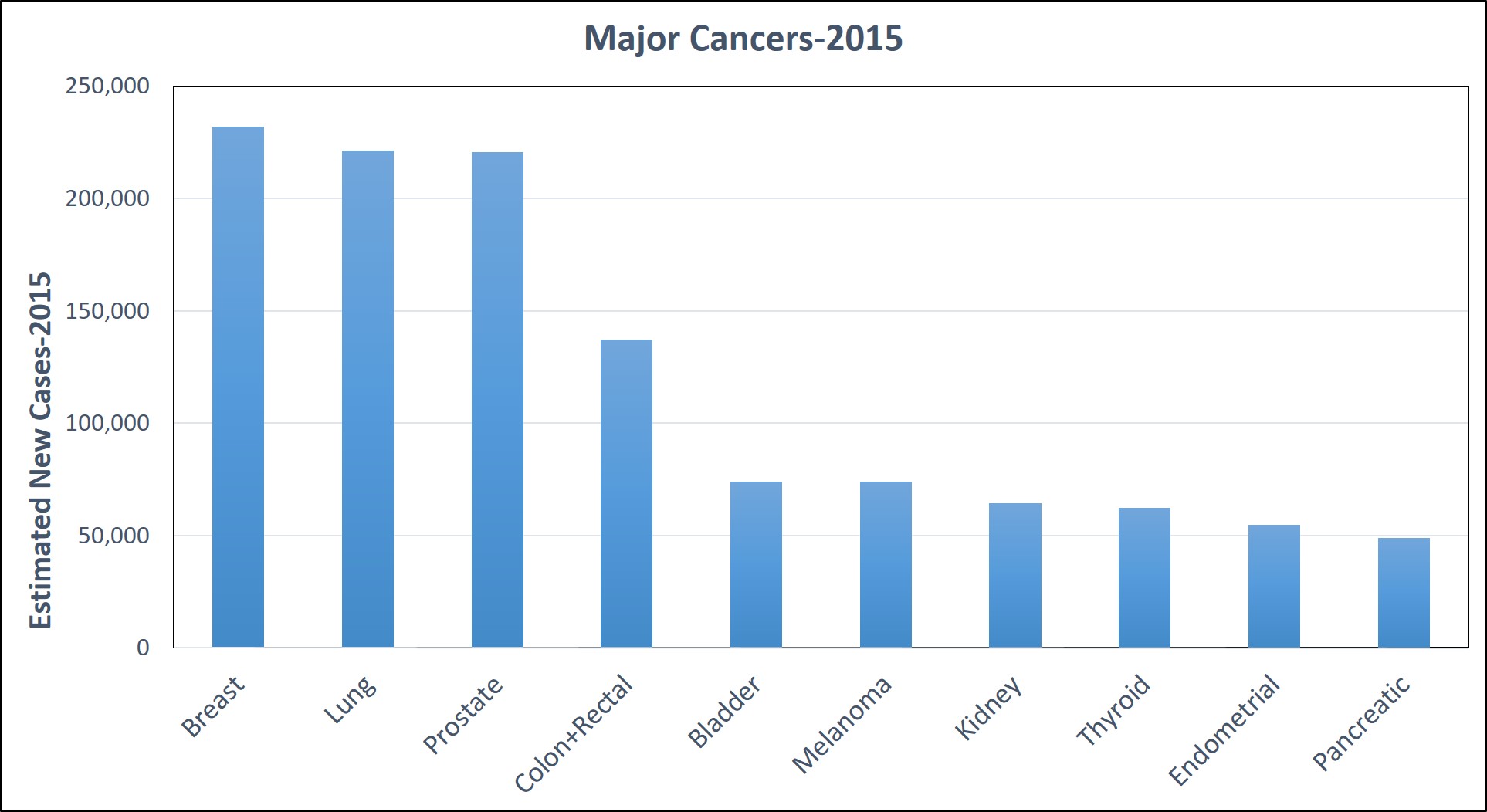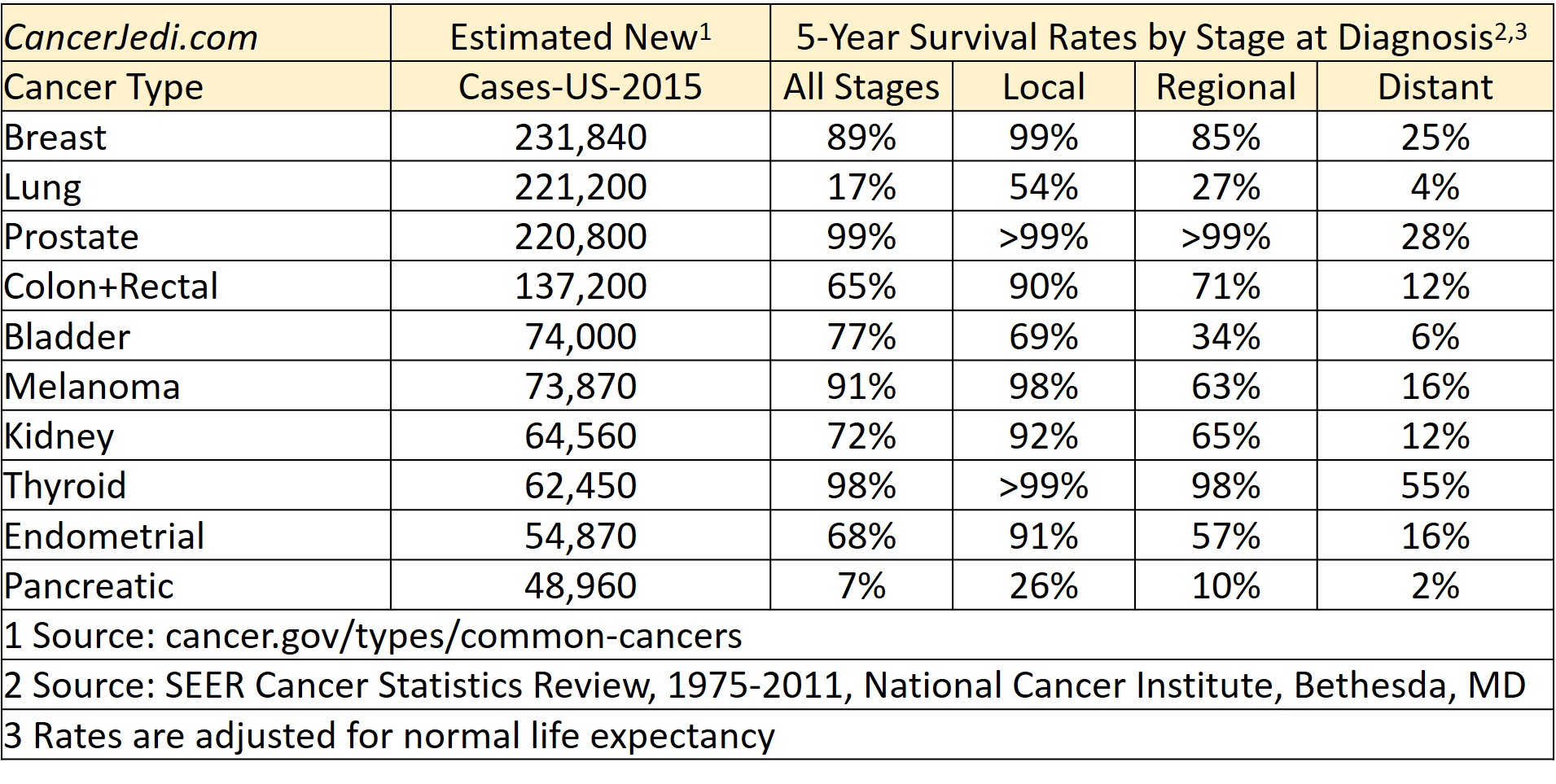Cancer Statistics
The cancer statistics publicized in the many government-funded websites are primarily based on the average survival rates of patients which have primarily been given the “standard of care” or what we would call “the average” treatments for each cancer type. The main goal of our website is to provide you with the critical information you need to make the critical decisions facing you without inundating you or overwhelming you with data.
Cancer Statistics-What You Need to Know
So, what do you really need to know about cancer statistics? What data do you need to know about your specific cancer and how should you interpret that data? The main reason most people want to know about the statistics of their specific cancer is so that they can have some idea of their prognosis. However, as you will learn as you read through the information on our website, each cancer type is different and most importantly cancer in each patient is unique in terms of its origin and stage of progression and specific mutations present in the cancer cells. What the published statistics are based on is an averaging of the survival of all these unique individuals that have mainly been treated with the same standard protocols.
Here is what we believe you need to know about cancer statistics:
- Some types of cancer are more prevalent and more serious than others and have a lower average survival rates
- Survival rates as presented in the typical statistics are more favorable: 1) for early stage cancer; 2) for cancers that do not target a critical organ; and 3) when the cancer is localized and has not metastasized to parts of the body other than the primary organ
- The tables and charts that you will see in cancer websites and possibly be shown by doctors are based on average outcomes for people basically given average “standard of care” with no integration of individualized state of the art therapies specifically tailored to your cancer
- For advanced Stage IV metastatic cancer, the widely published cancer survival data will be quite grim. BUT REMEMBER – these statistics are based on average treatment that has not been individualized for each unique patient’s cancer. You can read some great Cancer Survivor Stories about people that were told there was no hope, but did not settle for average treatment and therapy protocols and did not get the average outcome.
What You Need to Understand
You need to understand the statistics of your cancer but only at a high level. If you come to understand What Cancer Is and What Treatment Options are available, which we try to summarize for you in the pages of this website, then you will be able to understand that even if your survival statistics for your cancer based on averages are less than an optimistic, you do not have to accept an average outcome if you do not accept average treatment and therapy protocols.
A very high level overview of what we believe you need to know about cancer statistics is summarized for you in chart and table below.


If you search the internet you will find an overwhelming amount of information on cancer and survival statistics. However, information summarized in the above table is all we believe you really need to know about cancer statistics to provide the foundation for your victory over cancer.
Once you have understood the basic statistics for your type and stage of cancer, we encourage you, instead of trying to understand and digest all the cancer statistics available on the internet, to go forward to gain more understanding of What Cancer Is and increase your level of hope and belief by reading the many Cancer Survivor Stories about patients that sought out and received the type of treatments and therapies that we describe and recommend in the pages of this website.
Then you can go forward and make your critical choice of the Best Cancer Center and the Best Cancer Doctors to help you develop and implement your action plan for victory over cancer.